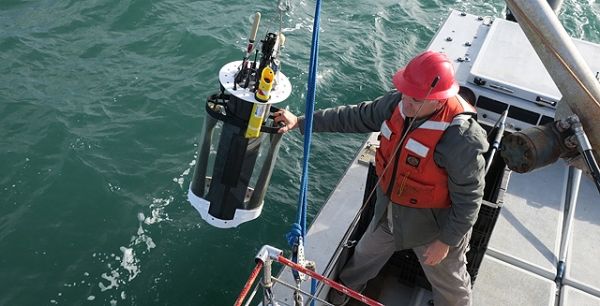When a doctor checks up on a patient, they might listen to the patient’s breathing, take their temperature, and discuss nutrition. When checking up on the ocean, scientists also take oxygen, temperature, and nutrient readings. But because of its size and variability, reading the ocean’s vital signs is a lot more challenging than wrangling the average patient.
Although moorings and autonomous underwater robots can help monitor ocean health, MBARI engineers and scientists have been working on a new diagnostic tool—a coastal profiling float—that can stay at sea for longer periods of time without requiring an anchor on the seafloor.
For two decades, open-ocean profiling floats have been successfully tracking temperature and salinity. The Argo network boasts around 3,800 drifting floats worldwide, and the Southern Ocean Carbon and Climate Observations and Modeling (SOCCOM) project has roughly 200 floats in the Southern Ocean. All of these floats collect data and send them back to shore within hours.
Contrary to what the name might suggest, profiling floats don’t just passively float in the ocean—they move up and down. Open-ocean floats spend most of their time at 1,000 to 2,000-meter (3,280 to 6,560 foot) depths, rising to the surface every 10 days thanks to an engineered swim bladder.
Continue reading at Monterey Bay Aquarium Research Institute (MBARI)
Image via Monterey Bay Aquarium Research Institute (MBARI)


